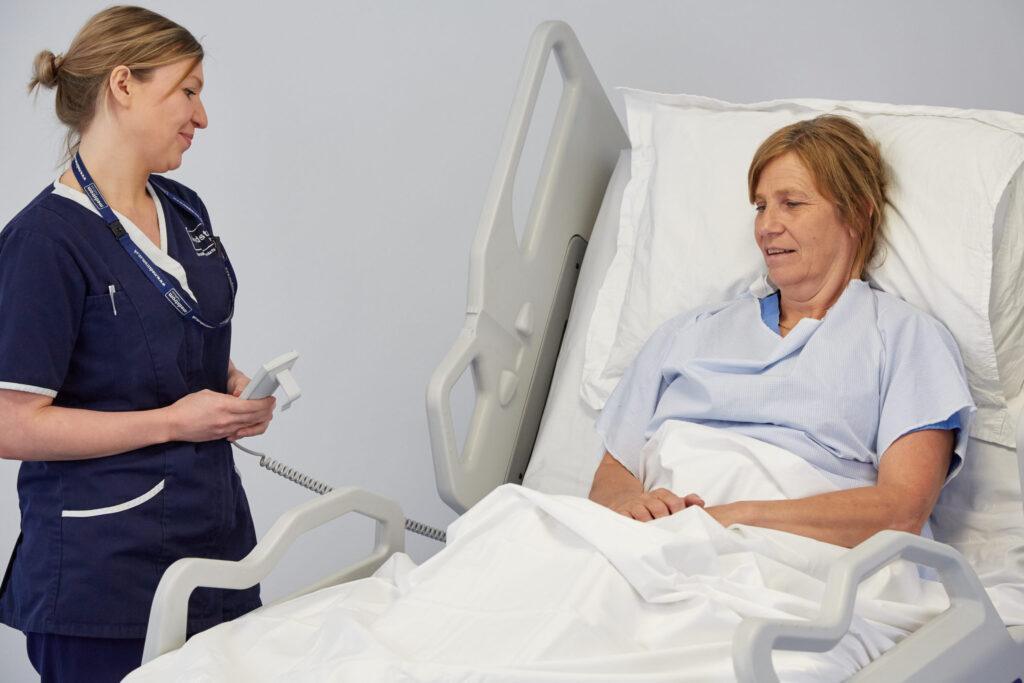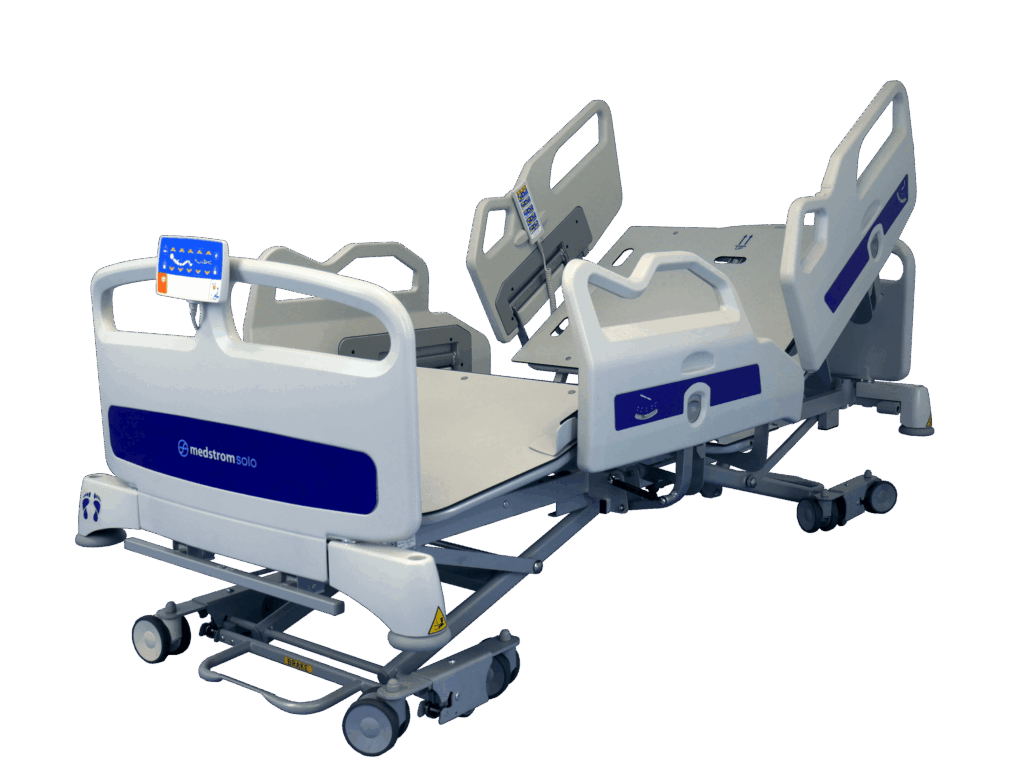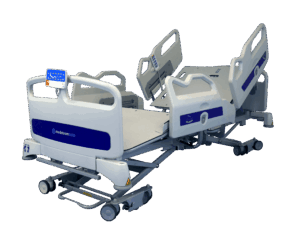
How can Patient Falls be Prevented?
Ultra-low hospital beds are a widely accepted tool in falls prevention and harm reduction due to the inherent shorter fall height and thus lower impact force. Because of the growing emphasis on the physical, psychological and financial cost of falls, the importance of selecting the most appropriate bed for vulnerable patients is paramount to tackling one of the main drivers of the forecasted increase in age-related pressures on healthcare.
An ultra-low bed should provide two key benefits for patients:
- A minimum height that is low enough to reduce the risk of fall-related injury
- An optimum height for mobilisation from the bed that can be programmed and stored for each patient
The risk of injury from a fall can be predicted by the relationship between bed height and injury risk through calculating gravitational potential energy (GPE) – which simply put means the further a person falls, the greater the impact (and therefore potential injury) will be.
The relative increase in GPE based on bed height has been calculated:
- A bed height of 32cm increases GPE by 31% versus a bed height of 21cm
- A bed height of 38cm increases GPE by 49% versus a bed height of 21cm
Unfortunately, not all patient falls can be prevented. But a bed with an ultra-low height can help to significantly reduce the risk and severity of falls injuries by being placed at its minimum height when the patient is in it.
Side rails can also help to reduce the risk of falls caused by patients accidentally rolling out of the bed. It is important to ensure that these are BS EN ISO 60601-2-52 compliant, meaning that there is sufficient height between the top of the mattress and top of the side rail to prevent patients from accidentally rolling over the top of the side rails and out of bed.
Ways to Mobilise Patients Safely
To safely mobilise a patient from a bed, their feet should be firmly on the floor whilst they are sitting at the edge of the bed, so they can achieve a “nose over toes” position prior to standing. The height at which the bed should be positioned to achieve this is equivalent to the patient’s popliteal height. Therefore, we can conclude that the distribution of popliteal heights of the population should dictate the minimum height required of a bed and mattress combination.
Published popliteal height data1,2 has been analysed to determine the proportion of the population that would be able to achieve a safe position (feet flat on floor) with beds of varying low heights. The bed heights were combined with a standard 14cm static mattress for the purposes of the analysis. Based on the data set, a platform height of 21cm combined with a foam mattress of 14cm provides an optimal mobilisation height for safely mobilising from the bed for over 99% of males and 96% of females.
The data also demonstrated that a bed height of 32cm protects just 16% of males and less than 1% of females and a bed height of 38cm protects less than 1% of males and females which will result in a great risk of falls occurring from the hospital bed when mobilising.
In Summary
The data shows that when considering which are the best hospital beds to help reduce the risk of patient falls and associated injuries, the bed height is important for mobilising patients safely and achieving positive outcomes:
- Ultra-low minimum height: Helps to reduce falls injuries due to a reduction in impact forces
- Optimal height for egress (popliteal height) for the greatest percentage of patients: Allows safe egress and mobilisation from the bed to minimise the risk of falls
View Our Range of Hospital Beds












